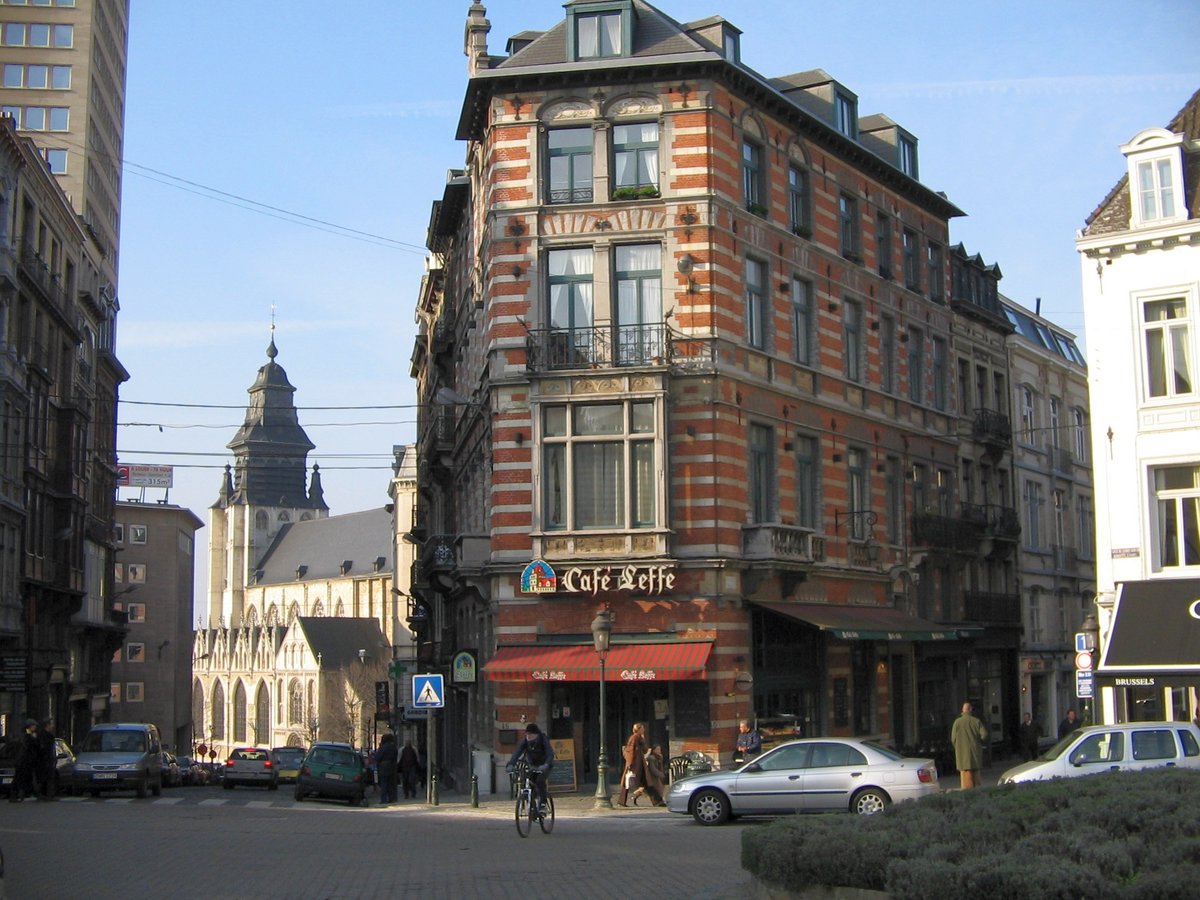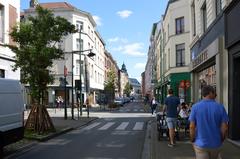
Church of Our Lady of the Chapel Brussels: Visiting Hours, Tickets, and Attractions Guide
Date: 03/07/2025
Introduction
Nestled in the historic Marolles district, the Church of Our Lady of the Chapel (Église Notre-Dame de la Chapelle / Onze-Lieve-Vrouw-ter-Kapelle) is one of Brussels’ most significant monuments, showcasing a remarkable journey through Romanesque, Gothic, and Baroque architectural styles. Founded in 1134, the church has survived medieval fires, wars, and restorations, bearing witness to the evolving religious and cultural fabric of Brussels. It houses artistic treasures, including commemorations to Pieter Bruegel the Elder, and continues to serve as a spiritual and cultural center through events, concerts, and guided tours.
This guide provides a comprehensive overview of the church’s history, architectural highlights, visitor information, and practical tips for making the most of your visit.
Historical Overview
Origins and Early Development
The church was established in 1134 by Godfried, Duke of Brabant, initially as a modest chapel under the care of the Monastery of the Holy Sepulchre in Cambrai. With Brussels’ expansion and the development of the Marolles district, the church was enlarged and elevated to parish status by 1210 (Kerkentoerisme Brussel; Sacred Destinations).
Architectural Evolution
Romanesque-Gothic Foundations
Early construction phases reveal robust Romanesque elements, such as thick walls and rounded arches, particularly in the crypt and lower tower. The choir, completed around 1250, exhibits the transition to Gothic architecture with slender columns and larger windows that invite more light (Kerkentoerisme Brussel; Belgium Travel).
Brabantine Gothic Expansion
A fire in 1405 led to the reconstruction of the nave in the Brabantine Gothic style, distinguished by pointed arches, ribbed vaults, and elaborate window tracery. Side chapels were added, reflecting the influence of local guilds and prominent families (Wikipedia; Kerkentoerisme Brussel).
Baroque and Later Additions
The 18th-century Baroque bell tower is the church’s most prominent later addition, featuring dynamic lines and a slate-clad exterior that contrasts with the earlier Gothic structure (Religiana). Restoration efforts in the 19th and 20th centuries preserved the church’s structural integrity and historic ambiance (Sacred Destinations).
Cultural and Artistic Significance
Civic and Religious Role
Serving the Marolles district, the church has long been a community hub for spiritual and civic life (Kerkentoerisme Brussel). Its role extended beyond worship, providing a gathering place for artisans and working-class residents.
Notable Burials and Memorials
The church is renowned as the burial site of Pieter Bruegel the Elder, a master of the Northern Renaissance. His memorial, located in the right aisle, features commemorative plaques and a modern bronze bust, drawing international art enthusiasts (Flemish Masters In Situ). It also honors local historical figures such as François Anneessens.
Liturgical Music and Organ Tradition
The grand 18th-century pipe organ, restored in the 20th century, is celebrated for its rich sound and ornate gilded case. The church regularly hosts concerts and choral performances, maintaining its reputation as a center for sacred music (Visit Brussels).
Architectural Highlights
- Romanesque Crypt and Tower Base: The oldest sections, with thick masonry and rounded arches.
- Gothic Nave and Choir: High pointed arches, ribbed vaults, and clerestory windows characteristic of Brabantine Gothic.
- Baroque Bell Tower: Completed in the early 18th century with ornate slate cladding and dynamic curves.
- Stained Glass Windows: Eleven grand windows illustrating biblical scenes and local history, casting vibrant light into the nave (Introducing Brussels).
- Carved Wooden Pulpit (1697): A masterpiece of baroque craftsmanship.
Visitor Information
Location and Accessibility
The church is centrally located at Place de la Chapelle/Kapelleplein, within walking distance of the Grand Place and Sablon district. Public transport options include tram lines 92 and 94 (Petit Sablon stop), bus lines 27 and 95, and proximity to Brussels Central Station (Introducing Brussels). Facilities accommodate visitors with limited mobility, though some areas may have steps or uneven floors due to the building’s age.
Opening Hours and Admission
- Monday to Friday: 10:00 am – 6:00 pm
- Saturday and Sunday: 9:00 am – 6:00 pm
Admission is free; donations are welcomed to support preservation efforts. Hours may vary during religious holidays or special events (Introducing Brussels).
Guided Tours and Events
Guided tours, available through the church or local tourism offices, offer in-depth exploration of history, architecture, and artworks. Advance booking is recommended for groups. The church also hosts concerts and cultural events—check the official website or local listings for schedules.
Visitor Etiquette
As an active place of worship, visitors are encouraged to dress modestly and maintain silence, especially during services. Photography for personal, non-commercial use is permitted; please be respectful during religious ceremonies.
Best Times to Visit
Weekday mornings provide a serene atmosphere and optimal lighting for photography, especially for the stained-glass windows. Weekends and afternoons may be busier, particularly during services or events.
Nearby Attractions
Enhance your itinerary by visiting other nearby sites:
- Royal Museums of Fine Arts of Belgium (209 meters)
- Magritte Museum
- Musical Instruments Museum
- Coudenberg Palace
- BELvue Museum
The Sablon district also features renowned chocolate shops, antique stores, and charming cafés.
Restoration and Preservation
Designated as a historic monument in 1936, the church has undergone major restorations, notably between 1989 and 1996, to stabilize structures and conserve artworks. Ongoing efforts ensure the preservation of its unique historical and architectural character (Wikipedia; Religiana).
Frequently Asked Questions (FAQs)
Q: What are the Church of Our Lady of the Chapel visiting hours?
A: Typically Monday to Friday, 10:00 am – 6:00 pm; weekends 9:00 am – 6:00 pm. Check for updates during holidays or special events.
Q: Is there an entrance fee?
A: No, entry is free for all visitors.
Q: Are guided tours available?
A: Yes, through the church or local tourism offices. Advance booking is recommended for groups.
Q: Is the church accessible to people with disabilities?
A: The church is generally accessible, but some areas may have steps or uneven flooring.
Q: Can I take photos inside?
A: Yes, for personal use. Please be respectful, especially during services.
Visuals and Interactive Media
- High-quality images highlighting the church’s façade, stained-glass windows, Gothic nave, and Bruegel memorial.
- Interactive map of the Marolles district and nearby attractions.
- Virtual tour and video links can be found on the official church website.
Internal Links
Conclusion
The Church of Our Lady of the Chapel is a cornerstone of Brussels’ architectural, artistic, and spiritual heritage. Its layered history, from Romanesque roots to Gothic grandeur and Baroque embellishments, offers a rich narrative for every visitor. Free admission, central location, and a vibrant program of cultural events ensure that all who enter leave with a deeper appreciation for Brussels’ enduring legacy.
Plan your visit today, download the Audiala app for guided audio tours, and follow us for more updates on Brussels’ cultural treasures.




































































































































